 Sámegillii
Sámegillii  På norsk
På norsk  Po polsku
Po polsku
Do you know Sami school history?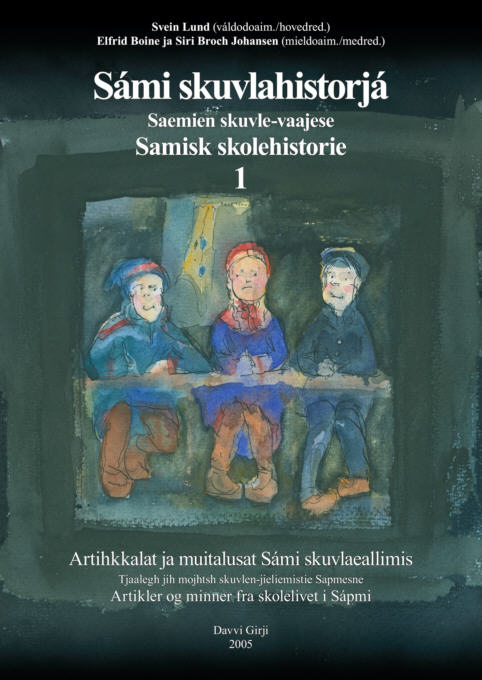 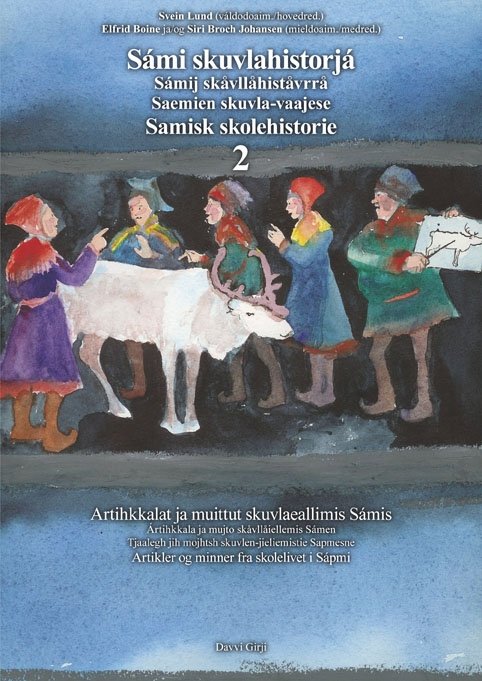 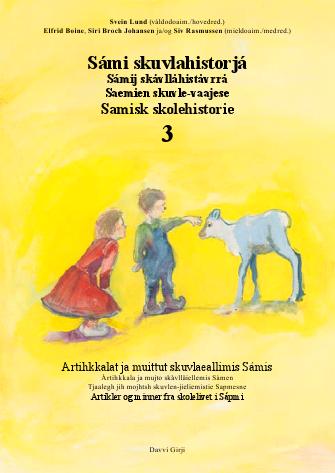 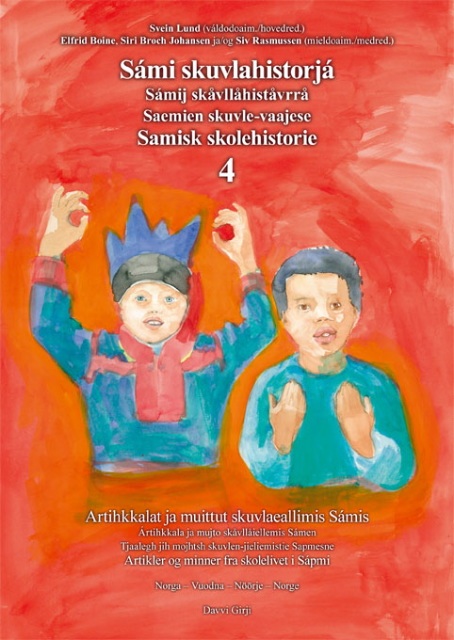 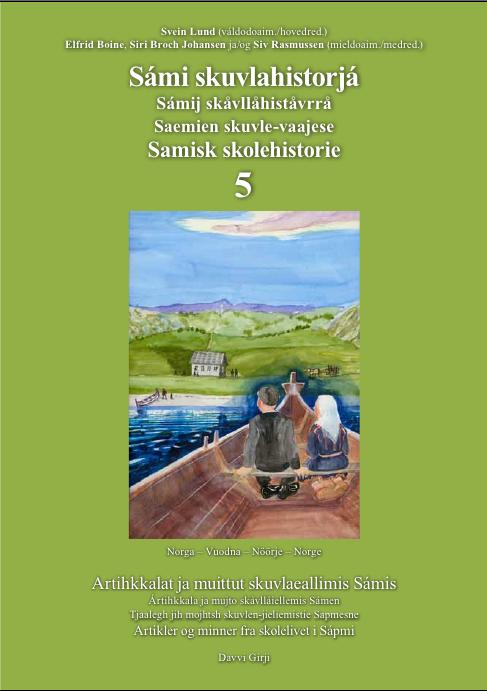 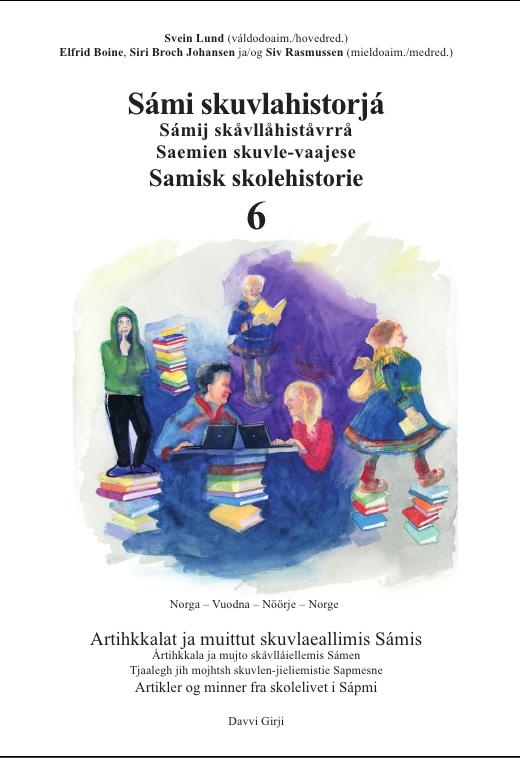 Sámi skuvlahistorjá / Samisk skolehistorie (Sami School History) is a series of books published by the publishing house Davvi Girji. In about 240 articles in 6 volumes there is told about the experiences of Sami children in Norwegian schools, and about the changes in the educational politics of the Norwegian authorities towards the Sami population. The books are published with parallell text in Sami and Norwegian language. In this web site some of the articles of the first book are also published in English. It would be too much to translate it all, so to make this history available to a greater public, we are translating a series of newspaper articles, which sorted by topics make a summary of stories in the books. So far there are 29 articles published in Sami language by the Sami newspapers Min Áigi and Ávvir. They are also published here in Norwegian and English. Articles 30-36 will be published here gradually as they are printed and other language versions gradually as they are translated. These articles are edited by the main editor, Svein Lund. Besides him the editing board of the book series consist of Elfrid Boine, Siri Broch Johansen and Siv Rasmussen. |
Though much has been written about how the authorities’ policy have changed throughout the years, little has been written about how school has really been and about what pupils, teachers, parents and boarding-school employees have experienced. Little has also been written about the opposition to the authorities’ school-policy or about the struggle that, in the end, led to the Sami language and culture being given its place in school.
In my own encounters with Sami schools, as a pupil, student and teacher, I discovered how little was known about Sami school-history, both among pupils and teachers, and I myself have experienced how difficult it can be to find information. Then I started to ask why and discovered a possible reason for this; school was so traumatic for many that they have not been able to talk about it.
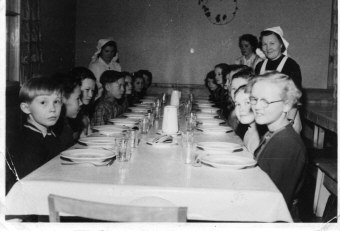 |
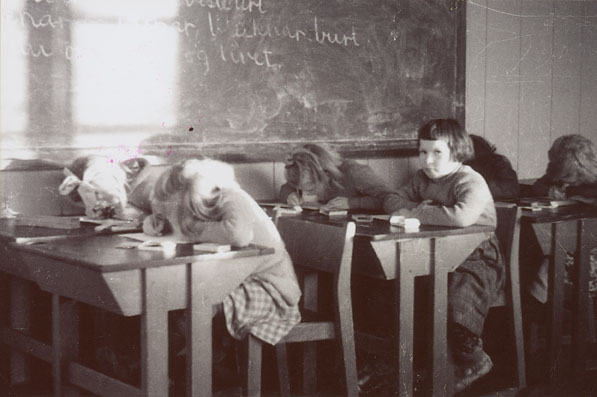 |
| Sami school in Hattfjelldal, Nordland.
Dinner at the boarding school, 1953 (Photo: Sigrid Bergli Sørnes) | Schoolchildren in Sirma in the early 1950s. (Photo: Ivar Skotte) |
In the first article of Sami school-history 1, Henry Minde gives the following explanation of why so little has been spoken about Norwegianization: “Usually, people tell a lot of stories about their time at school. But such stories and information from the Sami school milieu, have, until now, been lacking, or have been brief and superficial. There is every reason to believe that this difference is due to suppressed shame over experiences and episodes that have stayed with many Sami from their time at school.”
(Henry Minde's article, SSH-1 )
With this series of books, we shall attempt to do something about this gap in our knowledge. When we have asked people for their stories, we have often been met with similar reactions to those referred to by Henry Minde. Some have said that their time at school was so difficult, that they neither wish to be reminded of it or talk about it. Others have said that they will talk to us, but only if they can do so anonymously or, be allowed to drink a bottle of wine first. Such accounts have not been included in this series. We have only included accounts with a name and photograph and where the narrator has been sober. It might mean that we haven’t got the worst stories or that the reality was even worse than the picture we present in these books. Even so, I think we have managed to show quite clearly that he was right, the young teacher who, in the 1950s, wrote in a letter to his parents:
"In school we are progressing rather slowly, but at least there is progress. Poor children who do not have teachers who speak
their own language. It is a crime against them..."
(Marit Aubert's story, SSH-1)
The Sami’s bad experiences at school may also be one of the reasons that they who have, until now, written most about Sami school-history are people from another background, who have themselves not suffered because of a linguistically and culturally foreign school. I also belong to that group, and I had had 13 years schooling in my own mother-tongue before I arrived in Samiland and saw how much worse the conditions had been for Sami of my age, who had attended a school where their mother-tongue was forbidden.
When I started studying educational science, I was interested to find out more about this history, about what had happened and why, and how school had affected pupils, teachers and the community. I sought others with the same interest, and together with a couple of former Sami teachers, we formed an editing committee and started collecting stories that will, in time, come out in book-form.
This time, we bring you a complete story from Porsanger, with the late Hans Hansen as narrator. He told his story to Hanna Hansen, who has written it down in the form of a poem.
 | Hans Hansen as a representative at a national conference for “Norske Samers Riksforbund” (Norwegian Sami Association), Kåfjord 1986. (Photo: Svein Lund) |
Long before I started at school I knew
we were not as good and wise
as those in shirt, topcoat and shoes
My father followed me the first day I attended school
We walked those five kilometres along the country road
I was dressed in a "kofte"
Most of us were in those days.
We received the bible history and catechism to bring home – in Norwegian.
I had heard the bailiff and the tax collector speak Norwegian.
I did not know more about the Norwegian language
before I started in school.
Our teacher spoke Sami and Finnish.
He had been taught at school in Lakselv.
When he attended school they had bilingual textbooks.
Sami and Norwegian.
He spoke Sami with us both outside and inside school
but had to teach us to read in Norwegian.
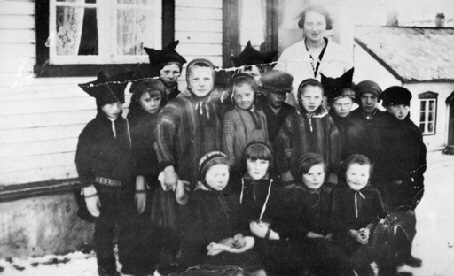 |
Kolvik School 1929 (Source: Porsanger bygdebok 2 - p. 135) |
We learnt twenty-nine letters from the Norwegian alphabet.
To put letters together into words was difficult.
We learnt about numbers.
"Fire" (4) and "fem" (5) the teacher said.
It was difficult to understand the meaning.
The teacher said it meant “njeallje” and “vihtta”.
Then we understood.
We wrote with slate pencils on stone boards.
Spat on the board and erased it with the costume sleeve.
We did not understand what we wrote.
Read many books – Norwegian books on geography and natural science.
We understood the teacher’s questions, but could not answer.
Could not speak or explain.
Some children did not understand anything.
They were punished.
Had to stand during the whole lesson.
I was lucky,
The teacher spoke Sami to explain to me.
He may have understood that I had talents for learning,
even if I did not understand the language.
Ninety-two weeks I had attended school.
In forty-six of those weeks I did not understand much of what the teacher said.
Additional education was for the few.
Some started at school of agriculture and some started at folk high school.
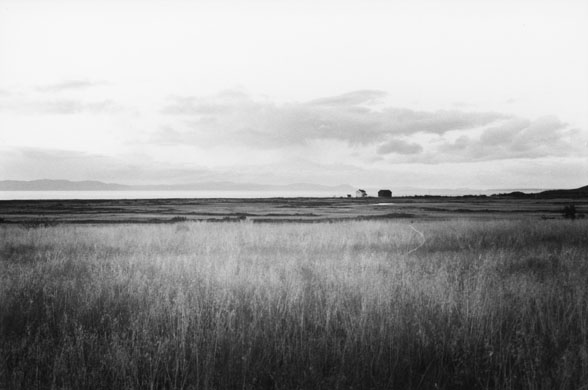
| From Porsanger (Photo: Hanna H. Hansen) |
The rest of us continued our lives as before.
What we carried with us from school was feelings of inferiority.
Everywhere in society they spoke Norwegian.
It was difficult for us.
We could not express ourselves.
At the same time we had to obey authority that spoke with us in Norwegian.
When we could not take it anymore
They told us to be objective and self-controlled.
It was not easy to understand the meaning of that.
Gradually I understood that they were asking from us what they were lacking themselves: impartiality and self-control.
From that moment I did not feel inferior anymore.
They can hold positions, military grades and stars.
That does not make a difference to me.
I speak to people, not to positions or stars.
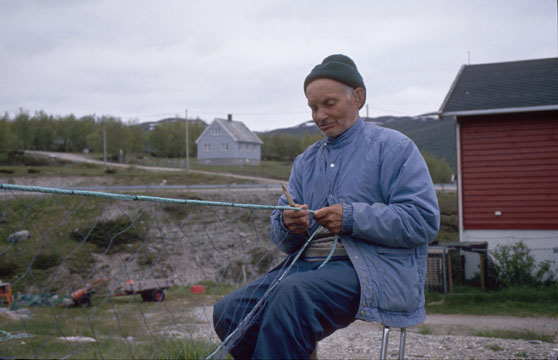
| Hans Hansen is mending nets.
(Photo: Arvid Petterson /Porsanger bygdebok) |
People down south are not the worst.
The worst are among our own.
Many came from other places.
They could hide their Sami origin here,
a solution for those who spoke a little Norwegian.
In that way they got into better positions.
I have never tried to hide myself.
Have had no brains for that.
Those who cut their own roots do not grow anymore.
Here you find all the articles in the series:
28.09.2007 Why Sami school history?
05.10.2007 Boundless ignorance
12.10.2007 Southerner-teachers encounter the Sami language
19.10.2007 The start of Sami beginner instruction
26.10.2007 The start of education in reindeer-herding
02.11.2007 From Sami to Norwegian vocational training
16.11.2007 Struggle for Sami gymnasium
28.11.2007 School experiences of Norwegian speaking Samis
14.12.2007 Resistence against Sami language and culture
25.01.2008 A strange world
23.05.2009 On Sami teachers
30.05.2009 Life in boarding school
06.06.2009 Sami pupils were bullied
13.06.2009 Sami content in the teaching
20.06.2009 Pupil as interpreter
04.07.2009 How the children quit speaking Sami
10.09.2010 God does not understand Sami
08.10.2010 The point of view of the Norwegianizers
13.10.2010 Men of the church defending the Sami language
02.12.2010 Sami teachers in old times
09.12.2010 Boarding school life in old times
18.12.2010 Sami pupils in special schools
14.01.2012 The parents' struggle for Sami education
21.01.2012 Reluctance and absence
28.01.2012 The school during the war
04.02.2012 Reconstruction and barrack schools
11.02.2012 Curriculums - for Norwegianization and for Sami school
18.02.2012 The great struggle of the curriculum
11.05.2013 Sami language forbidden? – 1
xx.05.2013 Sami language forbidden? – 2
xx.05.2013 Folk high school for norwegianization
xx.06.2013 Folk high school against norwegianization?
xx.06.2013 Skolt Sami school history – does it exist?
xx.06.2013 Duodji education – in and outside of school
xx.06.2013 Sami in the cities
xx.07.2013 Sami language in teacher education
Sami school history 1
Sami school history 2
Sami school history 3
Sami school history 4
Sami school history 5
Sami school history 6
Sami school history - main page